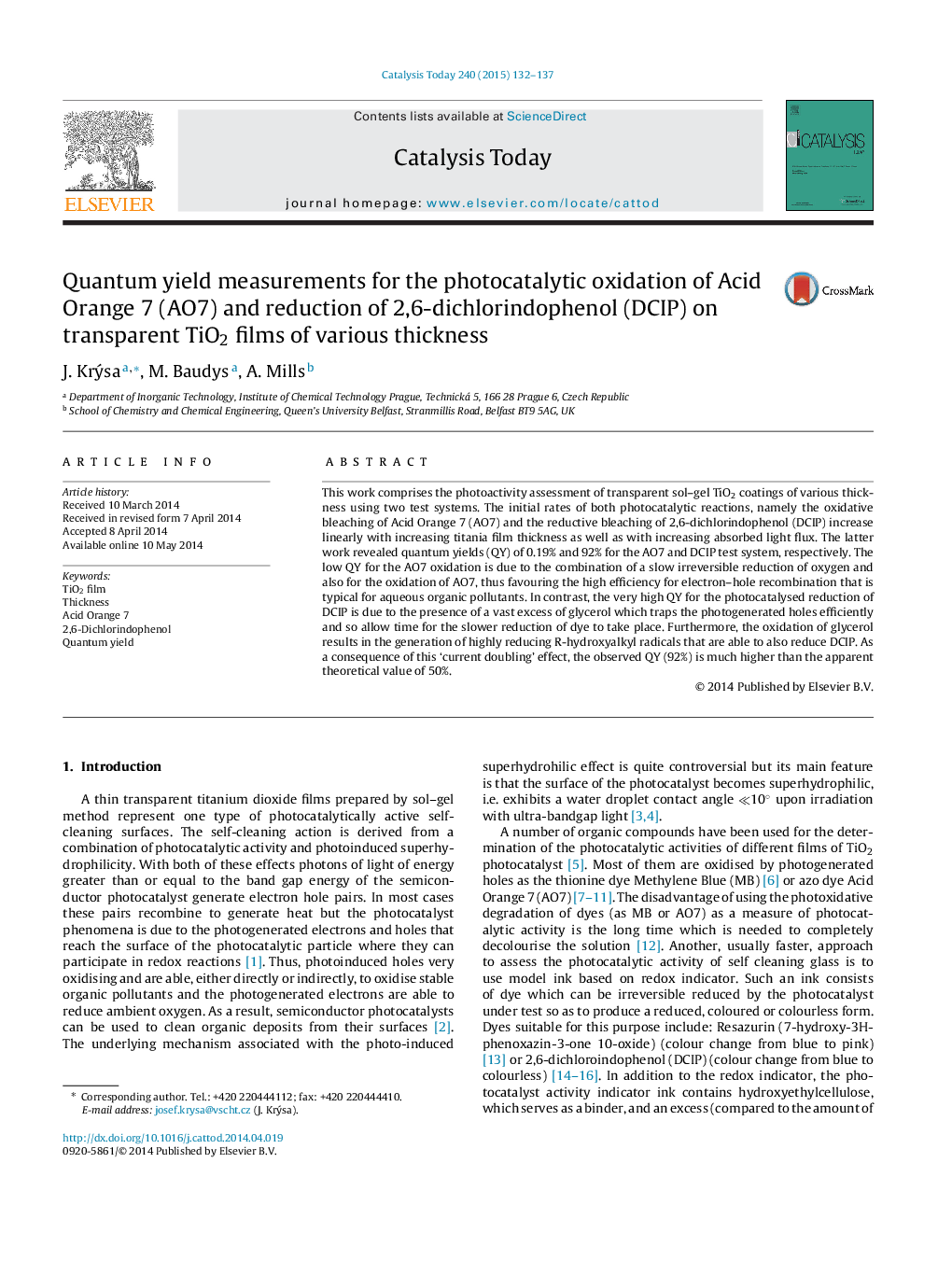| کد مقاله | کد نشریه | سال انتشار | مقاله انگلیسی | نسخه تمام متن |
|---|---|---|---|---|
| 54438 | 47009 | 2015 | 6 صفحه PDF | دانلود رایگان |

• Evaluation of the number of photons absorbed by transparent sol–gel TiO2 coatings of various thickness.
• Photoactivity assessment (quantum yield determination) using two test systems.
• Oxidative bleaching of Acid Orange 7 and reductive bleaching of a solid film containing the dye 2,6-dichlorindophenol.
• Low quantum yield (QY) for the AO7 (0.19%) is due to the high efficiency of electron–hole recombination.
• Very high QY for DCIP is due to the excess of glycerol which traps the photogenerated holes and allows slower dye reduction.
This work comprises the photoactivity assessment of transparent sol–gel TiO2 coatings of various thickness using two test systems. The initial rates of both photocatalytic reactions, namely the oxidative bleaching of Acid Orange 7 (AO7) and the reductive bleaching of 2,6-dichlorindophenol (DCIP) increase linearly with increasing titania film thickness as well as with increasing absorbed light flux. The latter work revealed quantum yields (QY) of 0.19% and 92% for the AO7 and DCIP test system, respectively. The low QY for the AO7 oxidation is due to the combination of a slow irreversible reduction of oxygen and also for the oxidation of AO7, thus favouring the high efficiency for electron–hole recombination that is typical for aqueous organic pollutants. In contrast, the very high QY for the photocatalysed reduction of DCIP is due to the presence of a vast excess of glycerol which traps the photogenerated holes efficiently and so allow time for the slower reduction of dye to take place. Furthermore, the oxidation of glycerol results in the generation of highly reducing R-hydroxyalkyl radicals that are able to also reduce DCIP. As a consequence of this ‘current doubling’ effect, the observed QY (92%) is much higher than the apparent theoretical value of 50%.
Rate of Acid Orange 7 oxidation (blue, left axis) and 2,6-dichlorindophenol reduction (red, right axis) on transparent TiO2 film as a function of absorbed UV light in the range from 340 to 400 nm.Figure optionsDownload high-quality image (110 K)Download as PowerPoint slide
Journal: Catalysis Today - Volume 240, Part A, 1 February 2015, Pages 132–137